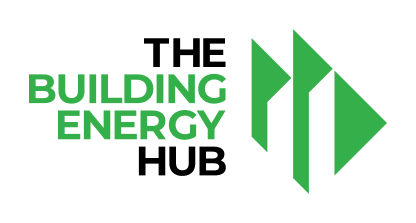Decarbonization Planning Guide
Develop Your Decarbonization Plan
Enabling Activities and Infrastructure Readiness
Get your building ready for decarbonization upgrades.
Enabling energy efficiency measures helps with future system upgrades and electrification by adding necessary infrastructure and allocating space in your building. For instance, to electrify equipment or add renewable energy to your building, you may need to upgrade other systems to enable the installation of heat pumps, solar panels, or other new technologies. These should be identified in your Greenhouse Gas Emissions Reduction Audit.
Enabling measures requires long-term planning to ensure you can take advantage of future decarbonization opportunities, such as heat pumps, solar panels, and EV charging stations. You should review areas where upfront work may be needed to prepare your building for decarbonization. For example, if the boilers fail and need replacement, having the electrical service in place already allows for installation of a heat pump system. Similarly, if a large incentive opportunity for a solar array arises, the testing, location, and infrastructure is already set up to add solar panels.
Key Enabling Questions
- What do I need to do first to prepare my building for future upgrades?
- Does it make sense to try to maintain as much existing infrastructure as possible or simply replace the full systems?
- Can I record hourly heating demand or other data points to help designers make more informed recommendations?
- Is there space in the mechanical room or roof for new equipment? Could these areas structurally support what’s needed?
- How should I phase efficiency, load reduction and enabling activities for an optimal holistic solution?
Enabling measures for future systems
Check Local Utility Capacity
You might have to upgrade your electrical service capacity depending on what exists onsite and the demands of new equipment. This requires getting an electrical load study by an electrical engineer or electrician and writing a load letter to coordinate with your local utility company. You need to work with your utility company, as new loads may require upgrades to transformers, feeders, and changes to the rate class or service structure. Upgrades include:
- Electrical infrastructure (wiring and lines)
- Local transformer replacement
- Electrical service changes
Determine Distribution Capacity
Upgrades to electrical capacity within the building may be required to ensure capacity for new electrified equipment. To test for this, your engineer or contractor will notify you that an x conducted by an electrical engineer or electrician is needed. Upgrades include:
- Larger electric panels and distribution systems
- Interconnections for solar panels
- Solar panels should be sized for local capacity needs
- Interconnections for EV charging stations
Find Suitable Placement of New Systems
System electrification (HVAC, hot water, kitchen, processes) is not always a one-for-one replacement. New systems can have different space or structural constraints that you should be aware of, such as:
1. Allocating space within existing mechanical or electrical rooms
- Many existing commercial HVAC and water heating systems are centralized, but heat pump replacements may require larger hot water storage tanks and more open space. If your building does not have extra space in an existing mechanical room, consider incorporating a decentralized strategy and using smaller heat pumps throughout the building.
2. Space for distribution
- New HVAC systems may require air-side changes or upgrades to existing ductwork and vents.
- New HVAC systems may require water or refrigerant piping upgrades.
3. Structural upgrades to roof or other areas
- Air systems require more outdoor components, which are located on either the roof or the ground. Consequently, some buildings may require additional structural supports or redesigned roof and RTU curbs to accommodate new form factors.
- Rooms may need to be reconfigured or reinforced to allow for new equipment and code compliance.
Review Controls and Commissioning
Before implementing changes to HVAC or water heating systems, it is crucial that your building is working properly and has the capability to control these new systems. Sensors should be calibrated or replaced as needed. Additional controls may be necessary depending on the type and age of existing equipment. Deferred maintenance such as repairs or cleaning may also need to be completed. This can be completed by your facilities staff or by a third-party commissioning agent. See the Energy Efficiency Checklist and Operations and Maintenance guide for more detail.
- Examining control setpoints
- Ensuring control sensors are working properly
- Checking if the building and individual systems have been properly maintained
Consider Upgrades for the Distribution Infrastructure of HVAC and Hot Water
When replacing existing systems with heat pump systems, some infrastructure upgrades might have operational differences in the equipment. These differences can include supply temperatures, flow rates, and the ability to modulate capacities.
- Ventilation systems may need upgrades to meet current code or best practices; they may also need to be reconfigured to allow factors such as heat recovery.
- Piping may need to be moved or reconfigured depending on need.
- Refrigerant lines may need to be run within the building depending on system selection.
- For buildings with hydronic heating, their distribution infrastructure may need to be upgraded to account for heat pump heating hot water supply temperatures below 180°F. To avoid limitations with supply water temperature, you may need to upgrade the configurations for:
- System piping
- AHU heating coil
- Heating hot water supply temperature and controls
- VAV box coil
- Perimeter heating
- To determine what you exactly need to upgrade, you should perform a thermal stress test on your building. Refer to the Thermal Stress Test the Building section in Chapter 4 of this How-to Guide for Heat Pump Systems for more information on thermal stress tests.
Future-proofing Considerations
Remember: building decarbonization requires a holistic approach. Ultimately, every enabling measure should line up with the building’s overall long-term plan.
This is an opportunity to include resilience strategies, such as relocating electrical rooms outside floodplains and ensuring adequate infrastructure for future EV or PV investments. Additionally, it’s essential to choose the right HVAC system and conditioning strategy that fits your building’s long-term phased plans.


